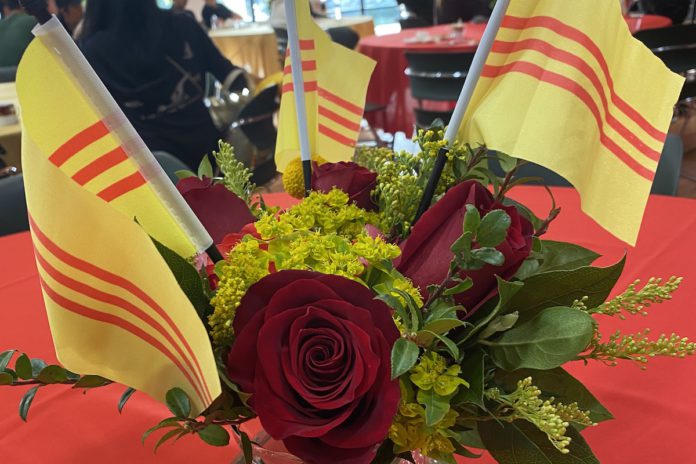On Wednesday, April 30, I was fortunate to attend a commemoration by the City of Milpitas on the 50th anniversary of the Fall of Saigon, also known as Black April by the Vietnamese diaspora.
Although I wasn’t able to be there for the whole event, I did get to hear some of the keynote speaker’s talk as he shared his experience of the Vietnam War. I also got to see performances from Viet Youth, Viet Steps and others that reflected both upbeat feelings of hope, resilience and community as well as the more somber emotions of mourning and loss.
One performance told the story of those who fled by boat, leaving everything from their homeland behind and braving the danger of the open ocean as well as risk of sexual assault. Many older members of the audience were moved to tears by this segment.
I was also surprised how many familiar faces in Milpitas had connections to the Vietnam War. City of Milpitas Councilmember Evelyn Chua talked about her older brother who signed up to fight and lost his life doing so.
I’m glad I made it for even part of the event because this is a side to the Bay Area’s diversity that we don’t often talk about. Yes, it’s fun to celebrate the Tet Festival in San Jose for Lunar New Year, or moon viewing festivals in the fall. But the presence of Vietnamese music, food, dance and fashion in the Bay Area has its roots in tragedy that the community feels strongly even at a remove of five decades.
Red and gold decorated the hall, the performers’ costumes, and the clothes of attendees. Obviously, both Vietnamese flags have the red and gold color scheme, but the one represented last week was the flag used from 1948 to 1975, also called the Freedom Flag or Vietnamese Heritage Flag, which symbolizes the resistance of South Vietnam to Communism. California officially recognized this flag in 2024.
One theme of the evening, echoed by both the keynote speaker and officials who took the mic, might clash with the Left-leaning sensibilities of the Bay Area: warnings against Communism. I think it’s a fair criticism that those under 40 tend to see Communism through “rose-tinted” glasses, taking to heart the messages of workers’ rights and glossing over the abuses of human rights.
The emcee who introduced the performers and gave context to the Vietnamese-language songs said that he had been in America 50 years, never once been back to Vietnam, and furthermore had no desire to go back to a country where the government doesn’t value freedom.
Fifty years after the fall of Saigon, let’s honor how Santa Clara County has welcomed Vietnamese immigrants and continue to work toward making their hope and vision of Freedom in America an enduring reality.




